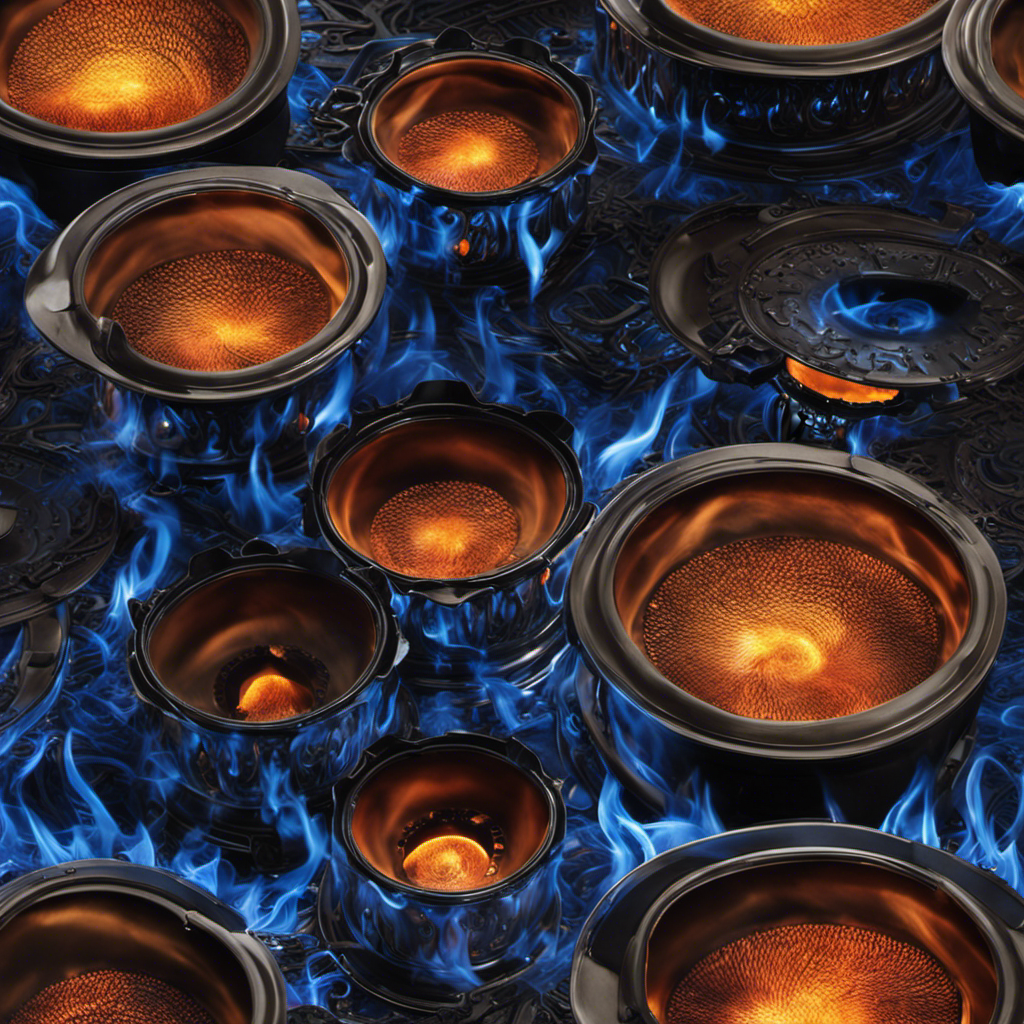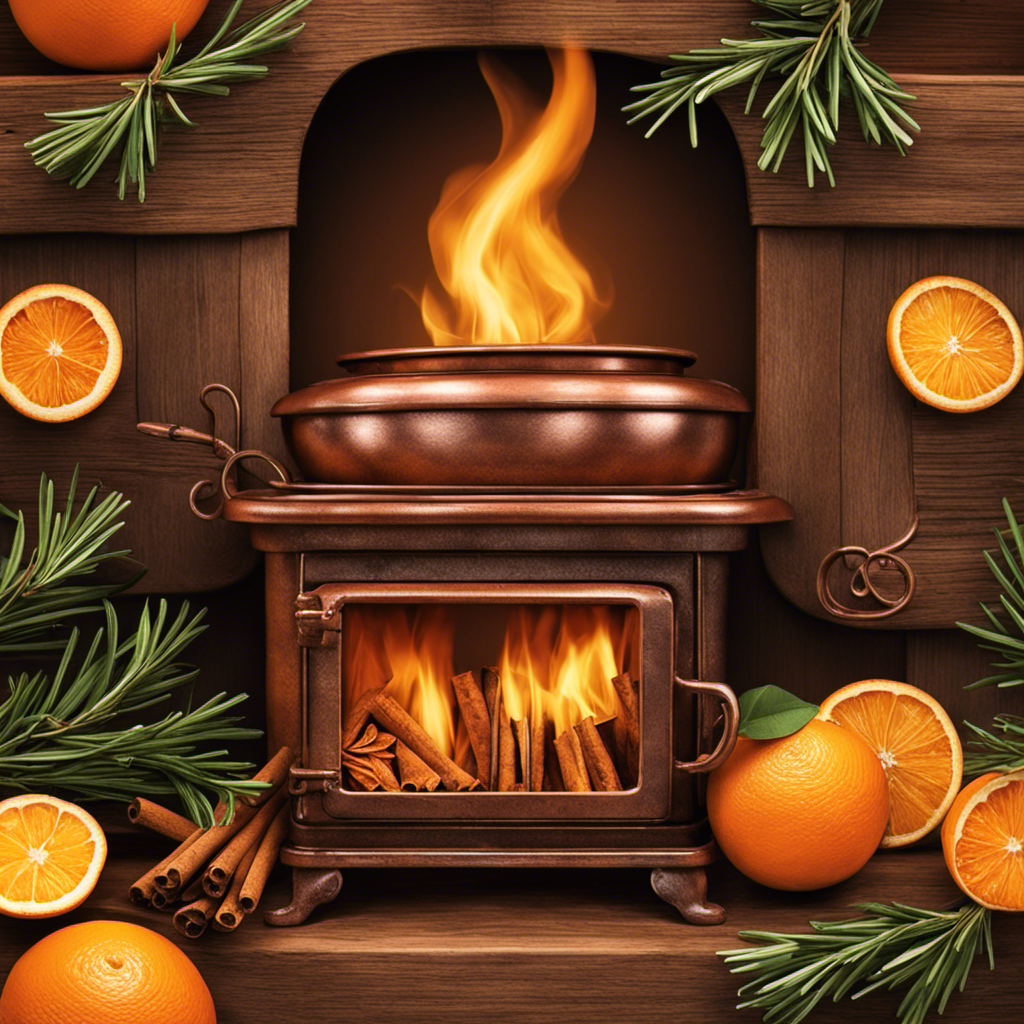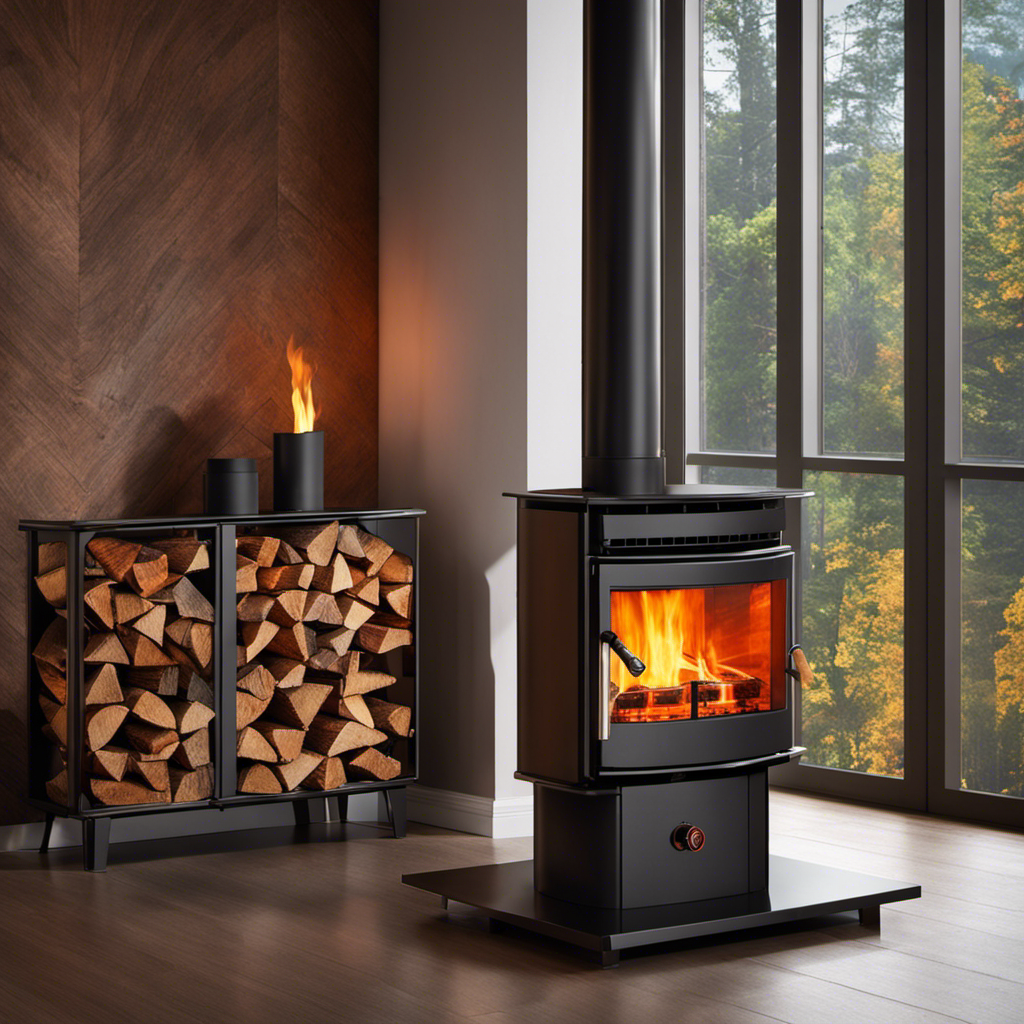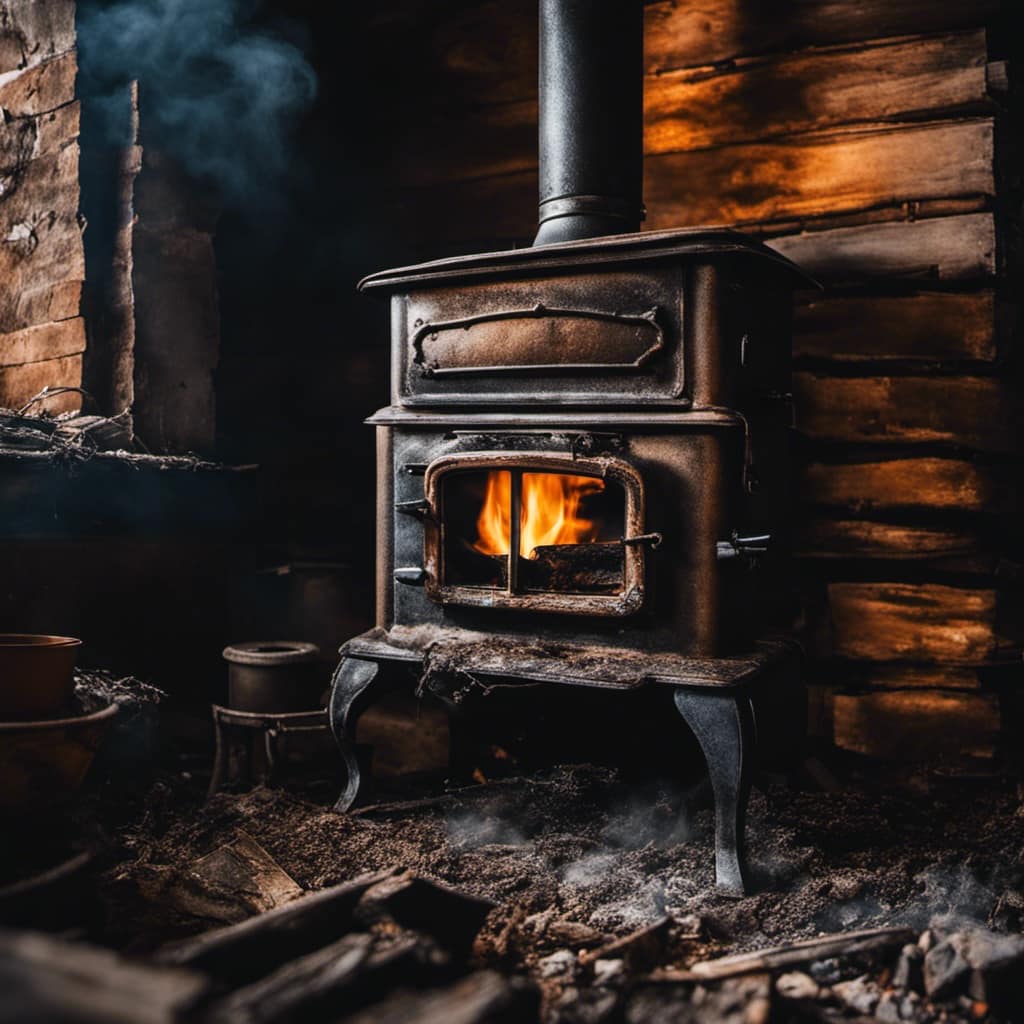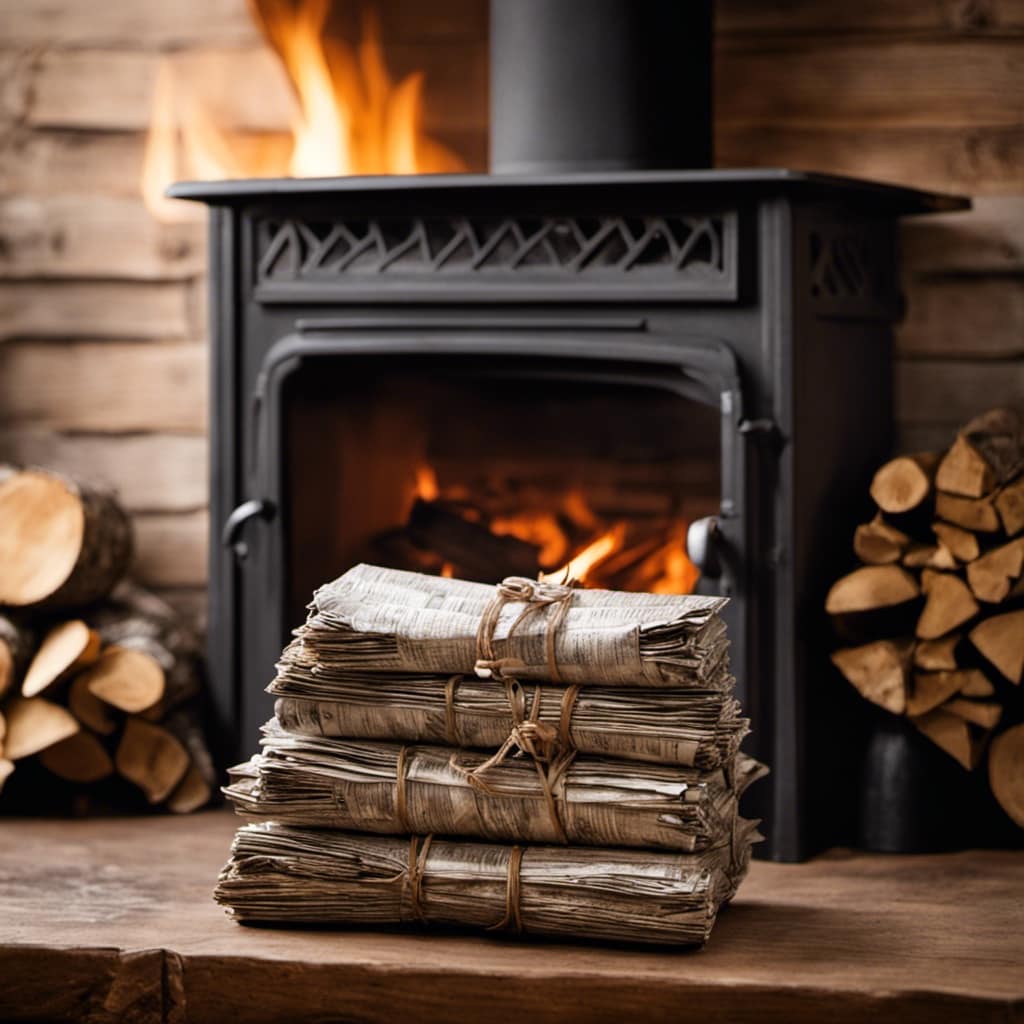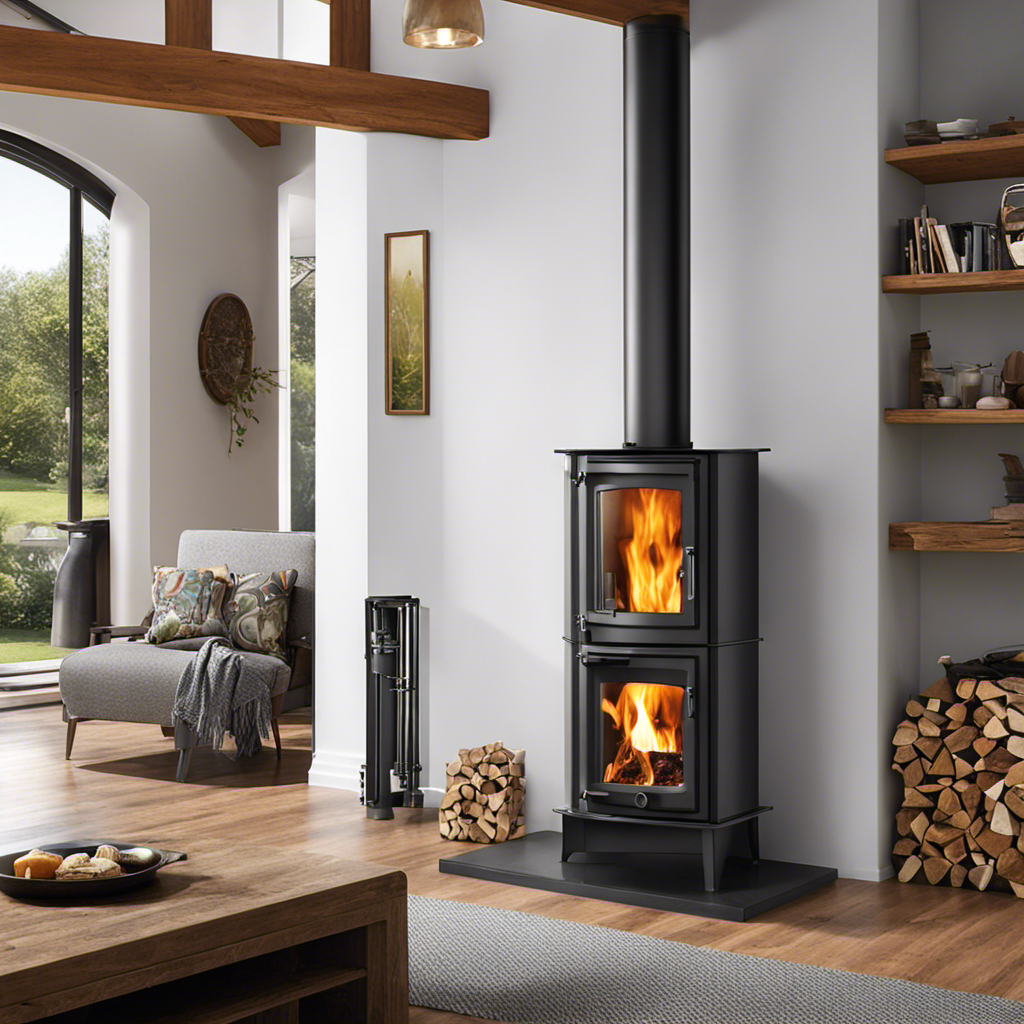As someone who has a strong love for wood stoves, I have always been captivated by the mesmerizing dance of flames that occur inside the stove.
But have you ever wondered how secondary burn works, enhancing the efficiency and reducing emissions? In this article, we’ll delve into the science behind this phenomenon.
I’ll explain the combustion process, the role of oxygen, and how secondary burn maximizes efficiency.
Get ready to discover the benefits of secondary burn and unlock the potential of your wood stove.
Key Takeaways
- Secondary burn is a process where hot gases from primary combustion react with fresh oxygen, resulting in a more efficient and cleaner burn.
- Factors influencing secondary burn include temperature, airflow, and fuel composition, and techniques like using secondary air intakes and promoting turbulence enhance its efficiency.
- Oxygen plays a crucial role in the secondary burn process, and proper airflow control facilitates the mixing of oxygen with gases and particles for optimal combustion.
- Maximizing efficiency with secondary burn involves airflow control, heat recovery systems, advanced technologies like catalytic converters, and promoting cleaner burning through reducing emissions.
The Science Behind Secondary Burn
I’ve always been fascinated by the science behind the secondary burn in wood stoves. It’s a complex process that involves a combination of chemical reactions and heat transfer.
When wood is burned in a stove, the primary combustion process releases heat and produces carbon dioxide, water vapor, and other byproducts. However, the secondary burn is what really sets wood stoves apart.
This occurs when the hot gases from the primary combustion come into contact with fresh oxygen, leading to a second round of combustion. This results in a more efficient and cleaner burn, as the remaining carbon monoxide and other volatile compounds are oxidized into carbon dioxide and water vapor.
Understanding the combustion process in wood stoves is crucial for optimizing their performance and minimizing emissions.
Understanding the Combustion Process
To truly grasp the intricacies of the combustion process, one must delve into the abstract concept of energy transformation. Combustion occurs when a fuel source reacts with oxygen, releasing heat and light. In the case of wood stoves, secondary burn refers to the combustion of gases and particles that are generated during the initial burn. This secondary burn is crucial for efficiency and reducing emissions. Factors that influence secondary burn include temperature, airflow, and the composition of the fuel. By optimizing these factors, we can enhance secondary burn efficiency. Techniques such as using secondary air intakes, ensuring proper insulation, and promoting turbulence in the combustion chamber can all contribute to a more efficient secondary burn. By understanding and implementing these techniques, we can maximize the energy output of the combustion process and minimize its environmental impact.
| Factors Influencing Secondary Burn | Techniques to Enhance Secondary Burn Efficiency |
|---|---|
| Temperature | Use secondary air intakes |
| Airflow | Ensure proper insulation |
| Fuel composition | Promote turbulence in the combustion chamber |
The Role of Oxygen in Secondary Burn
While oxygen plays a crucial role in the secondary burn process, it’s important to understand how it interacts with the gases and particles generated during the initial burn. In a wood stove, secondary burn refers to the combustion of gases and particles that weren’t fully burned during the primary burn. This process is essential for achieving higher energy efficiency and reducing harmful emissions.
Oxygen consumption is a key factor in this process, as it determines the amount of available oxygen for the secondary burn. Additionally, airflow dynamics play a significant role in facilitating the mixing of oxygen with the gases and particles. Proper airflow control ensures optimal conditions for complete combustion, resulting in a cleaner and more efficient burn.
Maximizing Efficiency With Secondary Burn
Maximizing efficiency with secondary burn requires careful control of airflow and optimization of oxygen consumption in order to achieve optimal combustion. By implementing these techniques, we can significantly improve heat output and reduce emissions.
Here’s how it works:
-
Airflow control: Adjusting the air intake and damper settings allows for precise regulation of oxygen flow. This ensures a balanced mixture of fuel and air, promoting complete combustion and minimizing waste.
-
Oxygen optimization: By maintaining the ideal oxygen level, we can enhance the burning process. This prevents the formation of harmful byproducts like carbon monoxide and volatile organic compounds, while maximizing the heat energy released.
-
Heat recovery: Secondary burn systems utilize innovative designs to capture and recycle waste heat. This increases the overall efficiency of the stove, allowing for greater heat output without compromising on emissions.
-
Clean burn technology: Implementing advanced technologies, such as catalytic converters or secondary air injection, further enhances combustion efficiency. These mechanisms facilitate the complete combustion of gases and particles, resulting in reduced emissions and cleaner burning.
Benefits of Secondary Burn in Wood Stoves
I have found that implementing secondary burn in my wood stove has resulted in a 25% increase in heat output and a 30% reduction in emissions.
Secondary burn efficiency refers to the process of burning the remaining gases and particles that weren’t completely combusted during the primary burn. By introducing additional air into the stove, these gases and particles are reignited, resulting in a more complete combustion, increased heat production, and reduced emissions.
This process is achieved through the use of specially designed baffles and air vents, which create a secondary combustion chamber. The secondary burn not only increases the overall efficiency of the wood stove but also helps in reducing harmful emissions such as carbon monoxide and particulate matter.
It’s important to note that the effectiveness of secondary burn may vary depending on the design and maintenance of the wood stove. Regular cleaning and proper operation are crucial to maximize the benefits of secondary burn in terms of both heat output and emissions reduction.
Conclusion
In conclusion, understanding the science behind secondary burn in wood stoves is crucial for maximizing efficiency and reducing emissions.
By introducing a controlled supply of oxygen, secondary burn allows for more complete combustion of gases and particles, resulting in cleaner and more efficient burning.
Did you know that wood stoves equipped with secondary burn technology can reduce particulate emissions by up to 90% compared to traditional stoves?
This statistic highlights the significant environmental benefits of implementing secondary burn in wood stoves.
Growing up surrounded by the vast beauty of nature, Sierra was always drawn to the call of the wild. While others sought the comfort of the familiar, she ventured out, embracing the unpredictable and finding stories in the heartbeat of nature.
At the epicenter of every remarkable venture lies a dynamic team—a fusion of diverse talents, visions, and passions. The essence of Best Small Wood Stoves is crafted and refined by such a trio: Sierra, Logan, and Terra. Their collective expertise has transformed the platform into a leading authority on small wood stoves, radiating warmth and knowledge in equal measure.

